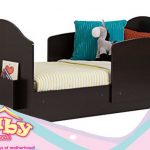Potty or toilet training is the mastery of skills necessary for urinating and passing stool (bowel and bladder control) in a socially acceptable time and manner.
It’s a crucial milestone for your child. However, learning to gain control of the bowel and bladder is a complicated process, and your child needs to be emotionally and physically ready to potty train.

Beginning toilet training too soon may make the process more frustrating for both you and your toddler. It is essential to start the process when you notice signs of readiness to potty train. The following are some of these signs:
- Your baby will start noticing when the diaper is wet or soiled and will seem uncomfortable. Some will even pull it don if they’re using a diaper like Pampers pants.
- Has an interest in other’s toileting behavior. For instance, you’ll see the baby follow someone to the toilet or go to the room and try to sit on the seat.
- Seems to stay dry for around 2 hours and during nap times. Babies pee a lot between ages 0-3 years. They will sometimes wet themselves immediately after you change them, but if your baby can stay dry for two hours or more, it’s time for potty training.
- Your toddler may have bowel movements that follow a regular and predictable pattern. If you can predict when your child will pee or poop, you will know when to sit them on the potty.
- Can walk to and from the bathroom independently and pull the pants up or down without your help.
- Can balance on a potty for a few minutes.
- Can listen and follow a few simple directions, e.g., come here, sit down.
- Can communicate the need to go to the potty or toilet through gestures, facial expressions, or specific words.
- Will show interest in the bathroom or potty chair.
- Will start asking to wear to grown-up underwear.
Click here to read more on popular methods of potty training.
How to potty train your child
- Buy the potty. Kindly do not train your child on the grown-ups toilet unless you have fixed a baby seat on it.
- Show your baby the potty and let him/her seat on it. If the toddler already understands toilet jargon like pee and poop, you’ll have an easy time explaining how to use the potty.
- Dress the child in clothes that enable them to use the toilet, like pants instead of overalls.
- Go for diapers that the child can pull up and down like ordinary pants.
- When you see signs that your baby wants to pee or poop, ask him to sit on his toilet.
- Be patient with your baby and yourself.
- Praise the toddler each time they use the potty.
Conclusion
Kindly do not stop giving drinks to your baby in an attempt to keep the diaper dry. You will dehydrate your baby. Also, please do not punish the child whenever he/she forgets to use the potty. Potty training is not a one-day affair, and children are not the same.













